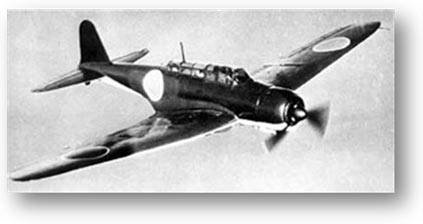Internally designated Type K by Nakajima, the Nakajima B5N was designed to meet a Japanese Imperial Navy requirement to replace the Yokosuka B4Y in the year 1935. It was ordered into production as the Navy Type 97 Carrier Attack Bomber. It remained as a standard torpedo bomber for much of World War II. It’s first ever prototype B5N1 saw skies in 1937. Since it had remained in service for more than 4 years successfully, by 1941, the B5N series of torpedo bombers had built the reputation of being the best of their type anywhere in the world. The B5N was first used in the Sino-Japanese War. This war eventually revealed several weaknesses in the original B5N1 production model like the lack of protection offered to its crew and fuel tanks. The Navy did not want to add weight in the form of armour, and instead kept looking to obtain a faster version of the aircraft.
The B5N was nicknamed as “Kate” by the Allies. It could accommodate two personnel one of which was the pilot and the other was a rear gunner. The system derived its power from a Nakajima Sakae 1,000hp (746 Kw) power plant. Although some of the earlier models were fitted with the Nakajima Hikari radial engines. It had a low-wing monoplane design which has inwards-retracting wide-track landing gear. The landing gear was an exceptionally immaculate design. The aircraft could reach a top speed of 235 miles per hour. In 1939 the improved B5N2 version appeared with a more powerful Sakae 11 engine fitted in a smaller cowling. Unexpectedly, the system was fitted only with a single 7.7 mm Type 92 machine gun in a trainable mount at rear. Other than that, the armament comprised of a single 1,764 lb torpedo or bomb load equivalent. The armament and bomb load remained unchanged, and this version remained in production until 1943.
B5N was well known in the Allies. B5N Kates played an important part of the attack on the US Navy positions at Pearl Harbor which ultimately led the United States to come forcefully into the war. About 144 or B5N Kates were used in that very attack. It can be held accountable for the sinking of several other Allied vessels in the Pacific which included the USS Hornet, USS Lexington and the USS Yorktown. More than 1,150 B5Ns were produced in the form of B5N1 and B5N2 variants. The BFN proved to be one of the best aircraft designed for torpedo bombing duty of the war.
Specifications
| Crew: | 3 (1 pilot, 1 commander and 1 back gunner/radio operator) |
| Length: | 10.30 m (33 ft 9½ in) |
| Wingspan: | 15.52 m (50 ft 11 in) |
| Height: | 3.70 m (12 ft 1? in) |
| Wing area: | 37.7 m² (406 ft²) |
| Empty weight: | 2,279 kg (5,024 lb) |
| Loaded weight: | 3,800 kg (8,380 lb) |
| Max takeoff weight: | 4,100 kg (9,040 lb) |
| Engine: | 1x Nakajima Sakae 11 radial engine, 750 kW (1,000 hp) |
| Maximum speed: | 378 km/h (204 kn, 235 mph) |
| Range: | 1,992 km (1,075 NM, 1,237 mi) |
| Service ceiling: | 8,260 m (27,100 ft) |
| Rate of climb: | 6.5 m/s (1,283 ft/min) |
| Wing loading: | 101 kg/m² (21 lb/ft²) |
| Power/mass: | 0.20 kW/kg (0.12 hp/lb) |
| Armament: | Guns: 1x 7.7 mm Type 92 machine gun ‘Ru’ (Lewis) in rear dorsal position, fed by hand loaded drum magazines of 97 rounds. A number of B5N1s were equipped with 2x 7.7 Type 97 machine guns in the wings. Bombs: 1x 800 kg (1,760 lb) type 91 torpedo or 1x 800kg (1,760lb) bomb or 3x 250 kg (550 lb) bombs or 6x 60 kg (132 lb) |
